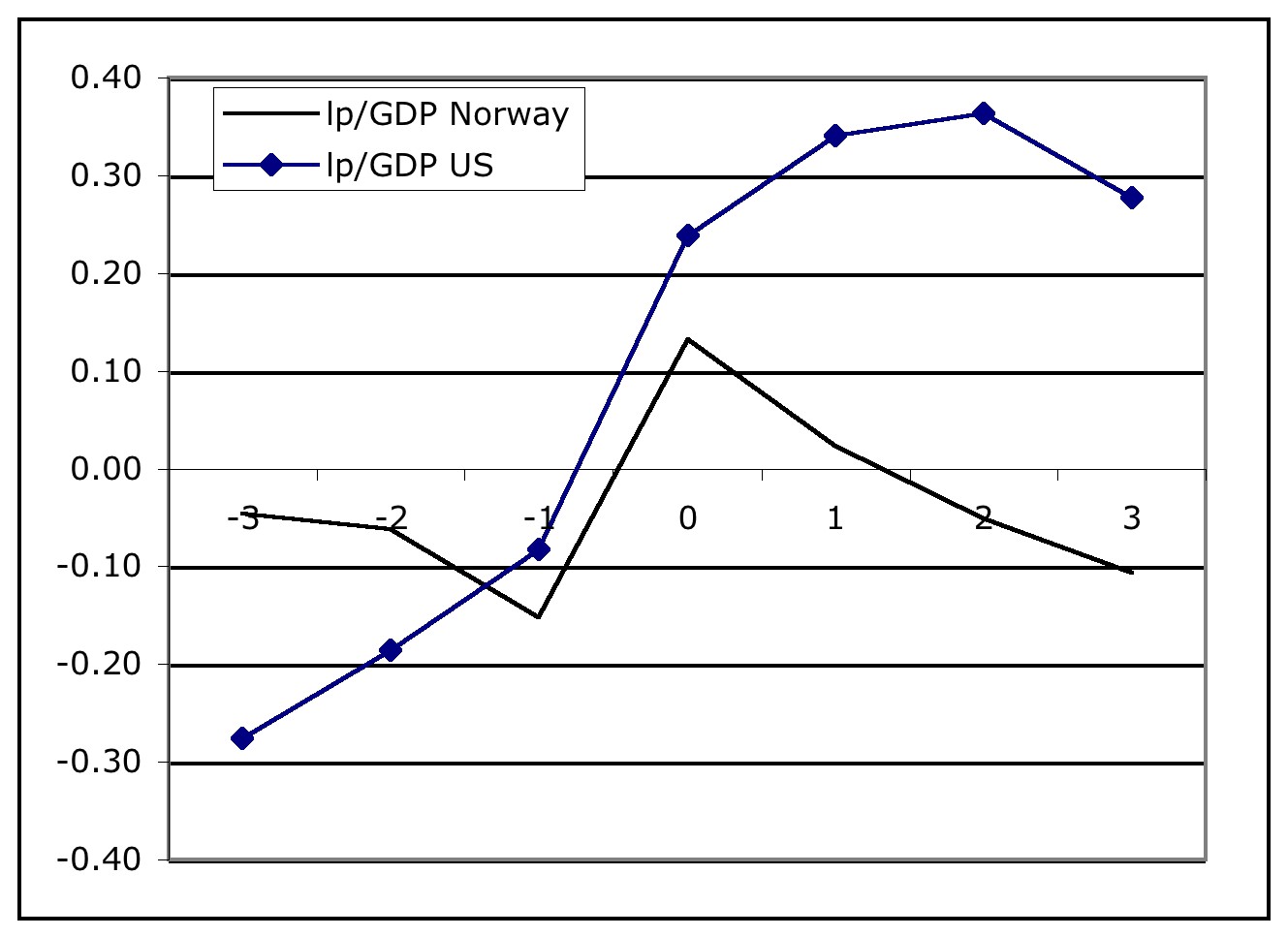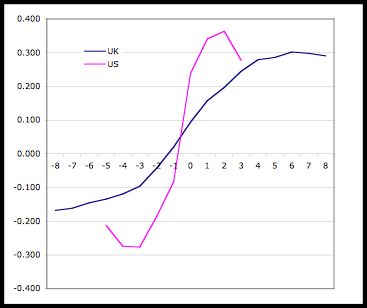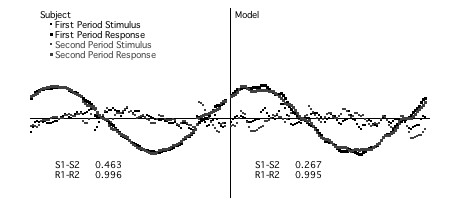[From Bill Powers (2004.02.29.1929 MST)]
Martin Taylor 2004.02.29.1131--
Oh, a thought in passing. Money seems to have two roles in an economy. One
is simply as a "medium of exchange" which allows earning very general
purchasing power without having to spend it before it rots. The other is as
a medium of speculation.
I'm not clear in what way these differ. I can certainly see how they
differ in terms of what perceptions are being controlled (in part) by
the level of money owned, but I don't see how they differ when we use
the kind of language you used.
My thoughts on this are not very clear yet. The "medium of exchange" part
has to do with the Econ004 model. This model contains a certain amount of
money, which is passed around among the entities of the model but is
perfectly conserved. The parties each retain a certain amount of cash
reserve, and spend the rest to build up inventories, pay out wages and
capital distributions, and to replace goods that are used. As long as
nobody runs out of money, the system will keep working indefinitely.
Eventually the model will allow for money to be spent on interest, on
maintenance and purchase of new equipment, and on expanding the plant as
population (and aspiration) grows. That will require creating new money,
but as the model stands it does not grow and needs only a fixed amount of
money.
It seems to me that a large monkey wrench can be dropped into the gears of
this model if we allow speculators into the picture. A speculator (or maybe
just "entrepreneur" is the word I want) has the goal of using money to
produce goods to create a return of still more money: what Keynes called
the M-C-M' concept of the economy. To the entrepreneur, producing goods for
Consumption is simply a way of turning some quantity of Money into a larger
quantity of Money-prime (in the hands of the entrepreneur, of course). So
the point of the game becomes the accumulation of as much money as
possible, and meeting the needs of consumers (as minimally as possible, at
the highest price possible) is only a means to that end.
What a speculator does is to divert as much of the money flow as possible
into his own possession. This has to have adverse effects on the balance of
the relationship between production and consumption, in which the costs of
production are returned to the producer in the form of purchases of goods
and services.
However, some such diversion would seem to be required in order to launch
any new enterprise. In Econ004 we can see how prices automatically adjust
to create just the producer income needed to pay the wage-costs of
production, to pay capital income to owners, lenders, renters, pensioners,
and such, and to set money aside for capital equipment. But to start a new
enterprise, money must come from somewhere to be spent on new equipment and
to hire new workers -(who come from where?). If this money is extracted
from the current sum in circulation, the rest of the economy must slow
down. So the only practical way to get the new money would seem to be
through borrowing it in a way that legally creates the new money. If this
is to happen without destroying the previously-existing balance,
productivity in existing industries must increase enough to free workers,
or new workers must come into the market, who can then be hired to man the
new plants.
As far as I can see, speculators who work on invested money (stocks and
bonds) don't create any new money, so all the changes in wealth or net
worth that result from such speculations have zero effect on the amount of
money that exists, but they do tend to take money out of circulation --
they reduce "liqquidity.". That's about as far as I've got on this.
Money is a "medium of exchange" when you buy a newspaper, and it is a
"medium of exchange" when you buy a perception that you have a chance
at receiving a lot of money later. I think you always have to
analyze money as a medium of exchange, whether the stuff for which it
is exchanged is itself money or some commodity or service.
The context I was thinking of was the C-M-C vs M-C-M view of the economy:
the consumer's view versus the entrepreneur's view. The consumer does not
want money for its own sake, but only for its abililty to supply needs and
wants of non-monetary kinds, C. The "pure" entrepreneur, when he is
concerned with his financial manipulations rather than with his role as a
consumer, places value on goods and services only to the extent that they
lead to increasing the money in his possession, M. If money has any value
outside itself, it has to be through its transformation into wealth, the
means of production, and that too is only a means toward acquiring more money.
I'm surprised to hear YOU even question whether "_personal_ aspects
of wealth and power are what make these large projects possible".
From a PCT viewpoint, what other aspects could there be?
"Personal aspects" was supposed to be shorthand for "aspects of having
wealth and power that provide personal satisfaction at having them," the
intended contrast being with the uses of wealth and power to create new
enterprises whether or not anyone is led to feel superior to or smarter
than other people in the process of doing this. A CEO has certain functions
to perform in a company to make it operate properly, and performing those
functions requires brains, costs money, and requires the ability to give
the right orders for others to carry out -- exercising power. But the
functions performed by the CEO have no relationship to his enjoymnent of
feelings of power over others, or his demands for a very high salary so he
can maintain an ostentatious life-style, or his requirement that others
treat him with special deference as if he is some kind of royalty or deity.
It is the latter kind of effect of wealth and power that leads to bloated
egos and incomes, and that creates inequities. I suspect that it also
disrupts the normal functioning of an economy.
Best,
Bill P.



